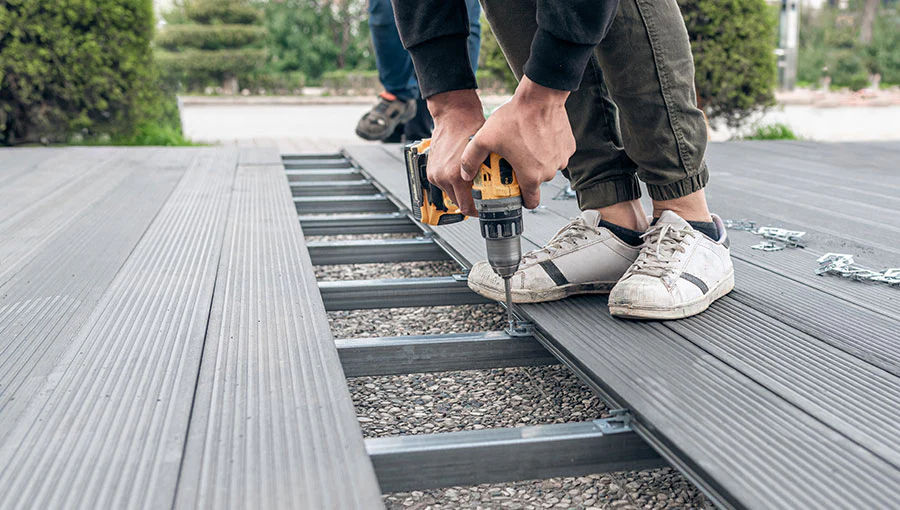Fasteners are imperative components in ensuring the integrity of your projects, but using them incorrectly can lead to various issues. By avoiding incorrect drill sizes and wrong screw lengths, you can drastically improve the effectiveness of your fixings. Additionally, utilising worn drill bits can compromise your results, while sticking to familiar products might limit your options. This blog post will guide you through the most common mistakes when using fixings and fasteners, helping you to achieve the best possible outcomes in your work.
Key Takeaways:
- Drill Size and Length: Using an incorrect drill size can lead to a poor grip in the fastening material.
- Screw Size: Selecting the wrong screw size can result in inadequate penetration and holding power, impacting the effectiveness of the fastening.
- Condition of Drill Bits: Utilising old or worn drill bits can drastically alter the hole size, affecting the fit of the fasteners.
Drilling Fundamentals
The fundamentals of drilling are vital for achieving effective and secure fixings. Using the correct drill size and length is vital to ensure a proper fit, as an incorrect size can lead to a weak grip within the hole. Always consult the manufacturer’s recommendations to avoid common pitfalls that can jeopardise your project.
Drill Bit Selection
At the outset, choose the right drill bit for your material. Using an old, worn, or bent drill bit can lead to inaccuracies in hole size, potentially compromising the integrity of your fastenings. An efficient drill bit not only enhances precision but also prolongs the life of your fixings.
Hole Depth Precision
Besides choosing the right drill bit, it is vital to ensure accurate hole depth. Insufficient depth can prevent screws from fully expanding rawl plugs, resulting in weak fixtures. Conversely, drilling too deep may cause damage to underlying materials or make your fastenings less effective.
Drill depth is often overlooked, yet it’s a significant factor in ensuring your fixings hold securely. If the hole is too shallow, the screw won’t engage properly with the material, leading to potential failure. Always measure and consider the depth specified on packaging, especially for concrete screws with minimum thread guidelines. A small adjustment in depth can lead to dramatic improvements in stability and performance, safeguarding your project against future issues.
Fastener Selection
Even the best installation can fail if you choose inappropriate fasteners. The right fasteners are vital to ensure secure hold and longevity in your projects. Understanding the specific demands of your materials and the nature of the environment can prevent costly mistakes. Avoid the temptation to use what you’re familiar with; instead, explore various fixings that may offer superior results.
Material Compatibility
Any fastener you select must align with the material you are working with to ensure effective performance. Using screws made for concrete in softer materials can cause damage and failure, while soft screws in heavy materials risk stripping or breaking. Understanding the compatibility helps achieve a secure hold and enhances durability.
Size Requirements
An incorrect size can lead to weak fastening. It’s vital to select screws that are long enough to penetrate deeply into the substrate while ensuring proper diameter for a secure fit. Options like concrete screws often have specific length and gauge indicators on their packaging, which should be carefully followed to avoid any mishaps.
Indeed, choosing the proper size is paramount for the integrity of your fastening work. Using incorrectly sized screws can compromise the hold, resulting in failures that may endanger your project. For instance, if the screw is too short, it may not grip adequately, while an oversized screw could damage the material or cause splitting. Always ensure that the screw length surpasses the thickness of the material you’re fastening, allowing the threading to grip securely. By paying attention to these details, you can greatly enhance the durability and effectiveness of your installations.
Common Installation Errors
Keep your installation efficient by avoiding common errors. Using the incorrect drill size or length, wrong screws, and worn drill bits can compromise your fixing’s effectiveness. An improperly sized hole results in a poor grip, while inadequate screw lengths can lead to weak connections. Always consult manufacturer guidelines for the best results when selecting fixings and fasteners.
Over-tightening Issues
By applying excessive force when tightening screws, you risk damaging the material or the fastener itself. This can lead to stripped threads or worn holes, compromising the overall integrity of your installation. Use a torque setting appropriate for your fixings to ensure a secure yet safe fastening.
Spacing Mistakes
Beside choosing the right fixings, spacing plays a significant role in the success of your installation. An inadequate distance between screws can weaken the overall structure and lead to failure.
It’s crucial to allow adequate spacing for your fixings to perform optimally. Insufficient spacing can reduce load-bearing capability, increase the risk of material cracking, or cause fastener fatigue. Always refer to specifications provided by manufacturers for recommended spacing guidelines to ensure strong and stable assemblies.
Tool Maintenance
After ensuring the correct fixings and fasteners, maintaining your tools is vital for optimal performance. Regular care can prevent costly errors associated with incorrect drilling and fastening. A well-maintained tool not only extends its lifespan but also enhances safety and efficiency during your projects.
Drill Bit Care
Behind every successful project is a drill bit that has been properly cared for. Worn or damaged bits can lead to oversized or undersized holes, compromising the integrity of your work. Take time to regularly inspect and replace bits as necessary to avoid these pitfalls.
Tool Calibration
Against the backdrop of precise fixing and fastening, tool calibration plays an vital role in ensuring accuracy. Tools must be regularly checked to avoid discrepancies that could lead to poor results. Using miscalibrated equipment can damage materials and yield unsafe fittings, causing potential hazards.
In fact, regular calibration of your tools can significantly reduce the risk of mistakes, particularly with drill sizes and lengths. If you do not calibrate properly, the risk increases that your drill bit is not providing the correct hole size, which can negatively impact grip and security of your fixings. Furthermore, ensuring your equipment is correctly fitted and functioning can lead to a significantly more efficient workflow. Always keep tools in peak condition to achieve the best results in your projects.
Material-Specific Guidelines
Once again, understanding the material you are working with is imperative when selecting fixings and fasteners. Each material has its specific requirements guiding the choice of the appropriate screws, drill bits, and plugs. Failing to adhere to these guidelines could lead you to a poorly secured installation, causing potential safety risks and diminishing the longevity of your work.
Concrete Applications
Among the various materials, concrete demands particular attention. Using concrete screws requires adhering to the minimum thread guidelines provided on the packaging, ensuring that the screw penetrates deeply enough to achieve a secure hold. Additionally, ensure that your drill bit is appropriate for the concrete to avoid spiral fractures or ineffective anchorage.
Wood Applications
Between different types of wood, the choice of fastening systems varies significantly. You need to consider wood density and grain direction, as these factors impact screw pull-out resistance and overall stability. Always opt for screws designed specifically for wood, as they promote better grip and reduce the risk of splitting.
Hence, when working with wood, the correct length and gauge of screws are vital. The screw should penetrate sufficiently into the wood to ensure a strong hold. If you use an old drill bit, it may lead to oversized holes, compromising the fastening. Choose screws that allow for ample engagement within the material, as inadequate penetration can lead to failure in holding over time. Investing in appropriate tools and materials will ultimately enhance the quality and safety of your project.
Professional Techniques
Now, utilising professional techniques can significantly enhance the effectiveness of your fixings and fasteners. This involves selecting the right tools for the job, ensuring you follow manufacturer guidelines for drill sizes and screw lengths. A methodical approach to your work not only ensures safety but also improves the longevity and reliability of your installations.
Pre-drilling Methods
Before you start fixing, it is advisable to employ pre-drilling methods to ensure a perfect fit. This helps avoid issues like splitting the material or creating a hole that is too large due to an incorrectly sized drill bit. Additionally, pre-drilling makes your job easier and the results more satisfactory.
Load Distribution
Above all, effective load distribution is vital for ensuring that your fixings can withstand the forces they encounter. This means using the appropriate size screw and drilling technique to spread the load evenly across the material, which enhances stability and safety.
Load distribution plays a vital role in the overall performance of your fixings. When you properly distribute the load, you minimise the risk of failure significantly. Always ensure that your screws pass through rawl plugs completely, allowing for optimal expansion and grip. Improper load distribution can lead to catastrophic failures, including structural damage or injury. Following manufacturer guidelines, such as those for concrete screws, is imperative to ensure you achieve the best results.
Conclusion
To wrap up, avoiding common mistakes when using fixings and fasteners is necessary for achieving a secure and lasting hold. Ensure you follow the manufacturer’s recommendations for drill sizes and screws, use appropriate materials, and replace worn drill bits regularly. Don’t hesitate to explore new products that may be better suited to your projects. By being mindful of these details, you can enhance the quality of your work and ensure a successful outcome.
FAQ
Q: What are the consequences of using an incorrect drill size and length when fixing?
A: Using a drill size that does not match the manufacturer’s recommendation can lead to inadequate grip of the screw within the drilled hole. This may result in loose or unstable fixings, compromising the overall integrity and safety of the installation. It is crucial to check the required drill size to ensure optimal performance of the fasteners being used.
Q: How does choosing the wrong size screw affect the fixing process?
A: Selecting the wrong size screw can arise from various factors, such as insufficient length to penetrate the materials being fastened or inadequate thread engagement within the substrate. For example, concrete screws often specify minimum thread guidelines on their packaging to ensure proper fastening. If the screw does not pass through the entire rawl plug, it may fail to expand effectively, leading to a weak hold. Always verify screw dimensions prior to commencing the job.
Q: Why is it important to use a new, sharp drill bit when working with fixings?
A: Using an old or worn drill bit can significantly affect the size and quality of the holes being drilled. Degradation may cause the bit to become slightly bent, resulting in oversized holes, or the outer edges may become excessively worn, making holes too tight for proper fixing. For accurate and effective installations, always ensure you are using a sharp, appropriate drill bit for the task at hand.
Check out our range of fixings and fasteners.


